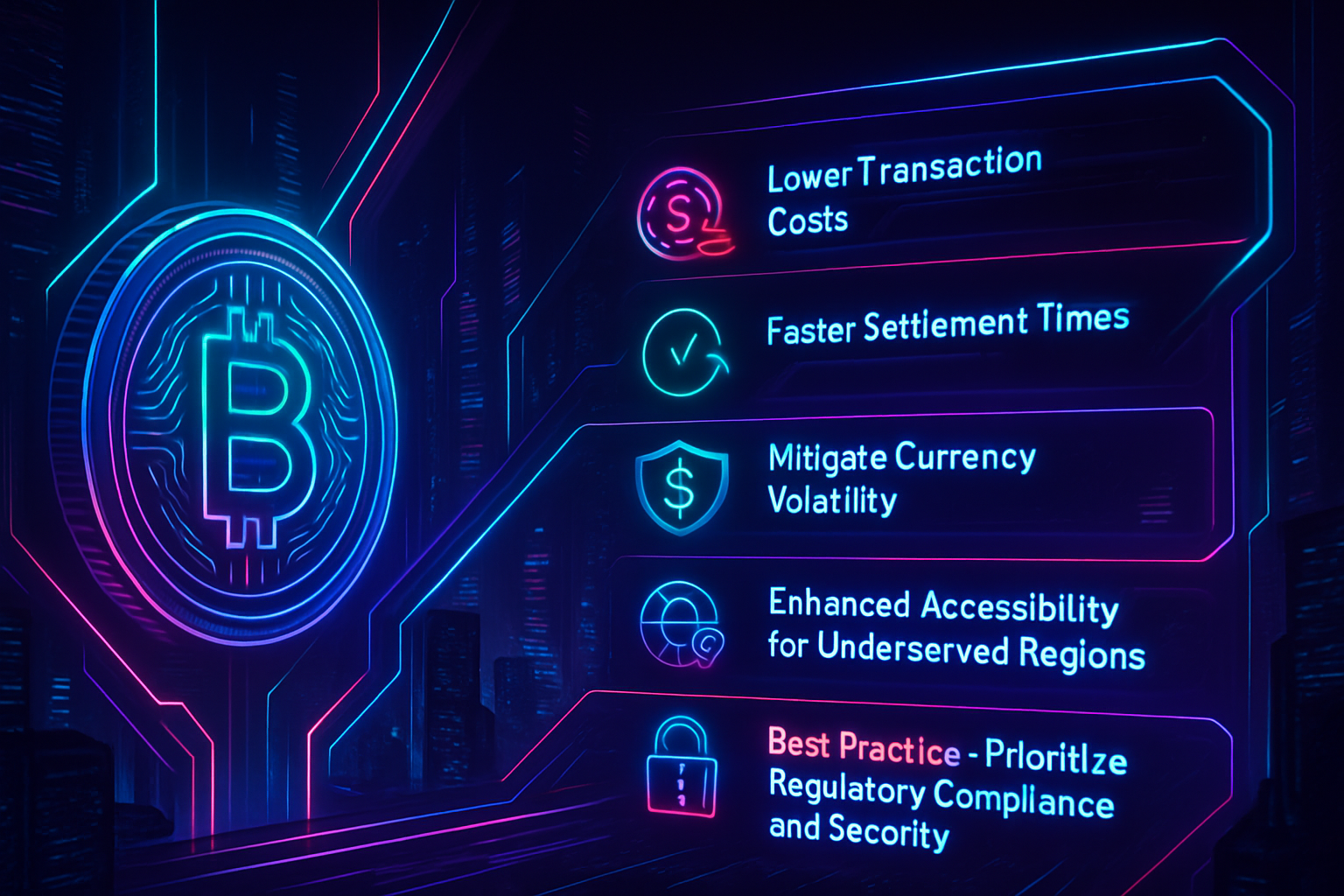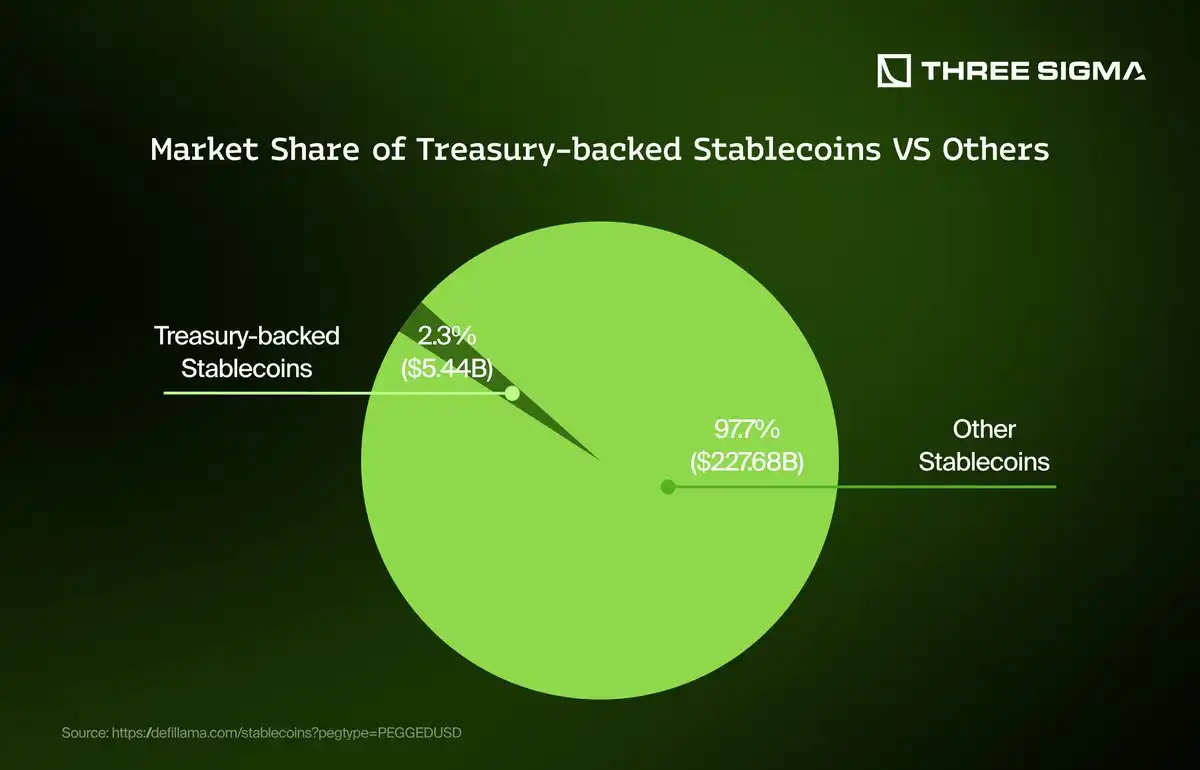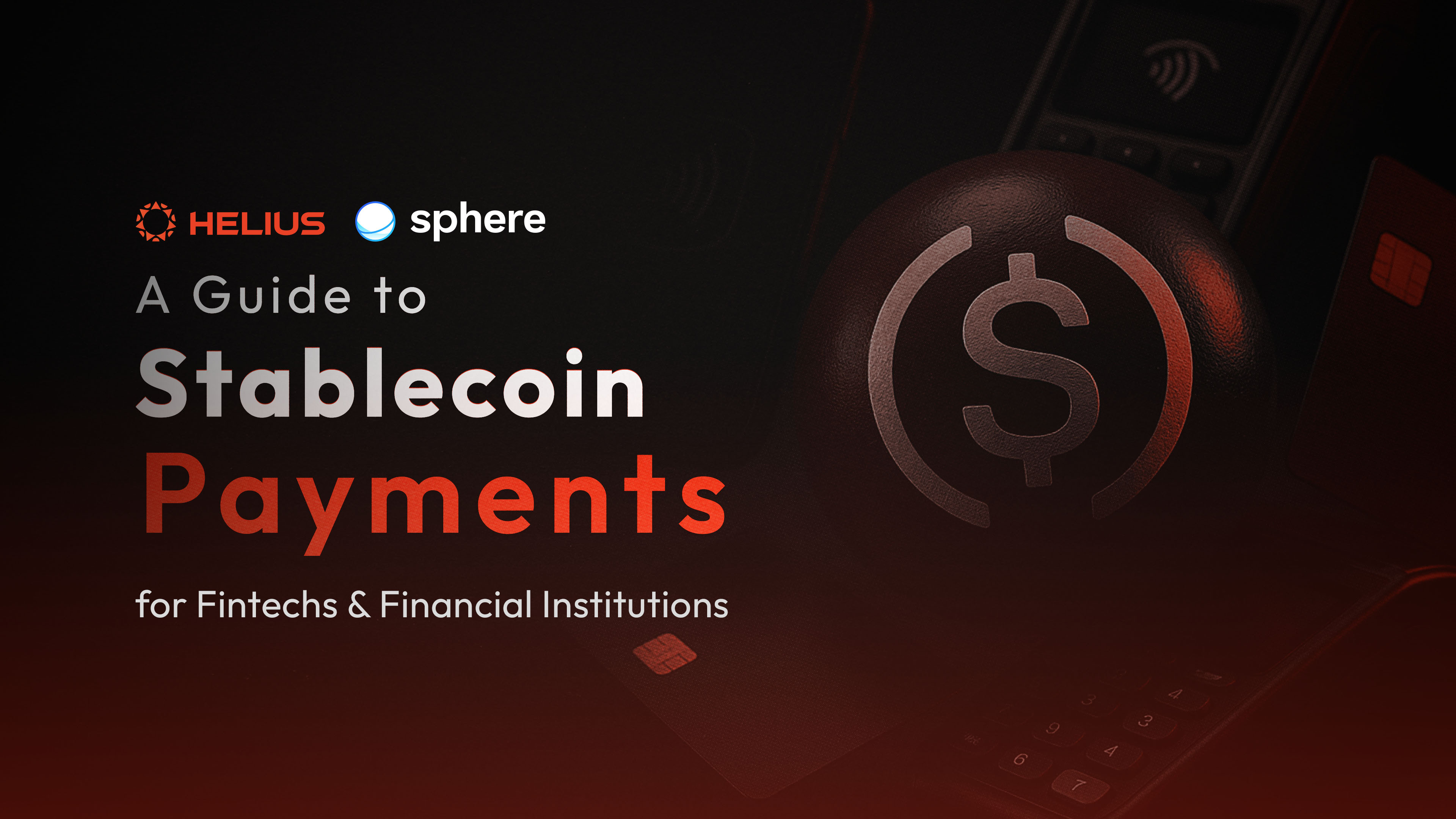
Stablecoins have rapidly emerged as a transformative tool for cross-border payments, offering a compelling alternative to legacy banking rails. As digital assets pegged to stable currencies like the U. S. dollar, stablecoins combine the efficiency of blockchain technology with the predictability of fiat value. For businesses and individuals navigating international transactions, stablecoins promise lower costs, faster settlements, and greater accessibility. In this article, we’ll examine the top five benefits and best practices for using stablecoins in cross-border payments, drawing on current market context and real-world adoption trends.

Why Stablecoins Are Disrupting Cross-Border Payments
The traditional cross-border payment process is notoriously slow and expensive, often involving multiple correspondent banks, currency conversions, and opaque fee structures. By contrast, stablecoin-based transactions leverage decentralized networks that operate 24/7, bypassing many of these friction points. This shift is especially impactful for emerging markets and developing economies (EMDEs), where access to reliable financial infrastructure can be limited (source). Let’s break down the core advantages that set stablecoins apart in this space.
Top 5 Benefits & Best Practices for Stablecoins in Cross-Border Payments
-

Lower Transaction Costs: Stablecoins significantly reduce fees compared to traditional cross-border payment methods, making them ideal for remittances and international business transfers. By eliminating multiple banking intermediaries, platforms like Circle (USDC) and Tether (USDT) enable affordable global transactions.
-

Mitigate Currency Volatility: Using stablecoins pegged to major fiat currencies (like USDC or USDT) helps protect against exchange rate fluctuations during the transfer process, ensuring predictable value for recipients. This stability is crucial for businesses and individuals sending money internationally.
-

Enhanced Accessibility for Underserved Regions: Stablecoins enable access to cross-border payments in emerging markets where banking infrastructure is limited or unreliable, promoting financial inclusion. Digital wallets such as Binance Wallet and MetaMask make it possible for users to participate in the global economy with just an internet connection.
-

Best Practice—Prioritize Regulatory Compliance and Security: When utilizing stablecoins for international payments, choose reputable platforms that adhere to KYC/AML standards and implement robust security measures to protect funds and comply with evolving regulations. Leading platforms like Coinbase and Fireblocks emphasize compliance and security for institutional and retail users alike.
Lower Transaction Costs: A Game Changer for Global Transfers
One of the most cited advantages of using stablecoins for cross-border payments is the dramatic reduction in transaction fees. Traditional methods like SWIFT wires or remittance services can charge anywhere from 3% to 10% per transfer, costs that quickly add up for small businesses or families sending money home. Stablecoin transactions eliminate many intermediaries, resulting in significantly lower fees that can be just a fraction of a percent (source). This makes them ideal not only for large corporate transfers but also for remittances where every dollar counts.
“When you stack up stablecoins as a payment rail versus traditional payment rails, it wins hands down because of speed, reliability and cost. “
Faster Settlement Times: Near-Instant Global Transfers
Banks often take several days to settle international transfers due to compliance checks and time zone differences across intermediary institutions. In contrast, stablecoin transactions typically settle within minutes. This real-time settlement capability is possible because blockchain networks operate continuously without regard to weekends or holidays. The result? Businesses can manage cash flow more efficiently while individuals receive funds almost instantly, a critical advantage for urgent needs or volatile environments.
Mitigating Currency Volatility With Pegged Assets
A persistent challenge with international transfers is exposure to currency fluctuations during the settlement period. Stablecoins pegged 1: 1 to major fiat currencies such as USDC or USDT offer a solution by maintaining predictable value throughout the transaction process. This means recipients know exactly how much they will receive in their local currency equivalent at the time of transfer, an invaluable hedge against sudden exchange rate swings.
By insulating both sender and recipient from unpredictable currency movements, stablecoins introduce a level of certainty rarely seen in traditional cross-border payments. This predictability is especially valuable for businesses managing supplier payments or payroll across borders, as well as for families relying on remittances to cover essential expenses. In volatile economies, the ability to lock in value during the transfer window can be the difference between financial stability and unexpected loss.
“Stablecoins have become my go-to for international payroll. No more worrying about exchange rates eating into my employees’ salaries. “
Enhanced Accessibility for Underserved Regions: Unlocking Financial Inclusion
The impact of stablecoins cross-border payments extends far beyond cost and speed. In many emerging markets, banking infrastructure is fragmented or inaccessible to large segments of the population. Stablecoins only require a digital wallet and internet access, no local bank account needed. This opens up global payment capabilities to millions who would otherwise be excluded from international finance.
For individuals in countries with capital controls or unreliable banking systems, stablecoins offer a reliable on-ramp to global commerce and remittances. NGOs and aid organizations are also increasingly leveraging stablecoin rails to deliver direct support in crisis zones where traditional payment channels are blocked or inefficient (source).
Best Practice: Prioritize Regulatory Compliance and Security
No discussion of international stablecoin transfers is complete without acknowledging the importance of compliance and security. As regulatory frameworks evolve rapidly across jurisdictions, users must ensure their chosen platforms adhere to robust KYC (Know Your Customer) and AML (Anti-Money Laundering) standards. Reputable providers publish regular audits of their reserves and maintain transparent governance structures.
Equally vital is operational security, using trusted digital wallets with multi-factor authentication, safeguarding private keys, and staying vigilant against phishing attacks. Understanding the conversion process from stablecoin to local fiat is also critical; fees can vary significantly depending on liquidity providers and regional regulations (source). Monitoring market conditions ensures you’re not caught off guard by sudden policy shifts or technological changes that could impact transaction efficiency.
Key Takeaways for Businesses and Individuals
Key Benefits & Best Practices for Stablecoin Cross-Border Payments
-

Lower Transaction Costs: Stablecoins significantly reduce fees compared to traditional cross-border payment methods, making them ideal for remittances and international business transfers. This cost efficiency is especially impactful for small businesses and individuals sending money abroad.
-

Faster Settlement Times: Transactions using stablecoins typically settle within minutes, bypassing slow correspondent banking networks and enabling near-instant global transfers. Blockchain networks like Ethereum and Solana process stablecoin payments 24/7, ensuring rapid delivery.
-

Enhanced Accessibility for Underserved Regions: Stablecoins enable access to cross-border payments in emerging markets where banking infrastructure is limited or unreliable, promoting financial inclusion. Digital wallets can be used with just a smartphone and internet connection.
-

Best Practice—Prioritize Regulatory Compliance and Security: When utilizing stablecoins for international payments, choose reputable platforms that adhere to KYC/AML standards and implement robust security measures to protect funds and comply with evolving regulations. Examples include regulated exchanges like Coinbase and Kraken.
The future of crypto cross-border payments is being shaped by these five pillars: dramatically lower transaction costs, near-instant settlements, effective mitigation of currency volatility, expanded access for underserved populations, and unwavering attention to regulatory compliance and security.
As adoption accelerates into 2025 and beyond, those who embrace these best practices will be best positioned to leverage stablecoins’ full potential, whether sending remittances home or scaling an international business. The shift toward programmable money isn’t just about efficiency; it’s about building a more inclusive global financial system where value moves freely across borders.








